Markets are moving fast—but are investors chasing real value or just the mechanical rabbit? Steve Sosnick and Steve Sears join Andrew Wilkinson to break down the momentum madness, fading volatility, and what could trip up the race.
Summary – IBKR Podcasts Ep. 266
The following is a summary of a live audio recording and may contain errors in spelling or grammar. Although IBKR has edited for clarity no material changes have been made.
Andrew Wilkinson
Investors are ever so slowly lifting their heads above the proverbial parapet, buying stocks, and attempting a run at February’s record highs. Now about four weeks from now, July the ninth, is when the relief to tariffs are scheduled to end in order to give American negotiators and their trading counterparts time to hammer out an America First deal.
This week, Chinese officials are meeting the US team in London. And investors are becoming increasingly optimistic and, as Interactive Brokers Chief Strategist Steve Sosnick will highlight in this episode, volatility has come screaming off in recent days. And also joining us is Steve Sears, Options Columnist at Barron’s.
Welcome back to you both.
Steve Sosnick
Thank you, Andrew. Great to see you, Steve.
Steve Sears
Good to be with you guys.
Andrew Wilkinson
Steve Sears, how does the stock market look to you compared to March when you last joined us and just ahead of that spring collapse in stock prices?
Steve Sears
The market today looks a little bit frothier compared to the market in March. The market in March, to me, seemed a little bit healthier. Sentiment was mixed, which I thought was constructive for a gain. Of course, there was a bit of a decline, but I believe that was a massive misread of Trump and in reaction to what, at the time, was the Trump administration’s clumsy handling of the markets.
Now I believe that people in the markets understand that Trump remains pro-market, that his plans are pro-market. Unfortunately, too many of them have that view. And thus, I think this gets back to basic sentiment.
Sentiment has generally been too positive. I don’t want to throw out some hackneyed phrase like “the animal spirits,” but I think the market mob is a little jazzed up, especially as we are just about to complete corporate earnings season. And the earnings have been better than expected on both the top and bottom line.
Steve Sosnick
I’ll throw out a hackneyed phrase—”flight to crap.” We see that we’re seeing a lot of speculative activity. You’re seeing a lot of stock—you couldn’t give away the CoreWeave (CRWV) IPO at $40 and now it’s quadrupled. Which is not to say that it was crap, but just the complete favoring of momentum over fundamentals.
I look at the way the Circle (CRCL) IPO was greeted, again, where you’re essentially paying a premium to own stablecoins that you could just go buy yourself. But that’s pretty much the case with any of these crypto treasury-type stocks. Now, Circle itself earns money from their fees, so it’s not exactly—it’s not like buying a Bitcoin treasury stock. It’s a bit different. But to your point, there’s certainly very big pockets of froth, if not overall.
Steve Sears
If I could add to your malodorous observation, I think one of the things that we all have to worry about in the marketplace is that there is a gigantic contingent of investors, institutional and retail, who are playing a hedge fund momentum game. And so you can take something that’s easy to, dare I say, manipulate—a recently introduced equity, equities with various liquidity profiles—and you can run them up and you can run them down. And we’re seeing that happen in forms that are outside the usual places that institutional investors congregate. And that, I believe, remains a factor not only for regulators but also for all investors to be mindful of.
Andrew Wilkinson
Well, Steve Sosnick, what does the dip in implied volatility say to you? Is it a reiteration of what you’ve just seen? Could you frame the recent magnitude of the slide in the VIX index for us?
Steve Sosnick
I think it’s actually just—it’s completely in line with the move in the stock market. We went from abject fear in April, and I think that some of it was justified. Part of it was the reaction to the tariffs, but I think actually what really spooked investors, to Steve’s point, was the president initially did not seem as though he was market-friendly or didn’t care.
Things were a little “yippy”. Then they—I think the messaging took a more market-friendly tone, which is really what had really been the basis behind the post-election rally. I think, not inconsequentially, more centrist, less of a Lutnick, was probably a big part of it.
I don’t think the market loved hearing from either Commerce Secretary Lutnick or Peter Navarro.
Steve Sears
I understand the market didn’t like hearing from Lutnick when he was at Cantor Fitz either.
Steve Sosnick
Yeah, I’m not gonna touch that, but I do know a lot of people on Wall Street who were not fans of his. Some of that is people who worked there, some of it is competitors who got beat by him.
Steve Sears
But you look at the fear gauge, which Steve and I disagree on from time to time, but what you’re seeing is a massive cleavage of trading activity between indexes and equities. And if you look at equity implied volatility, in fact, it’s often quite elevated.
And when you look at index volatility—implied and realized — to some degree it’s gonna reflect the marketplace. The market goes, the market sinks, vol goes up; the market rallies, vol goes down. And you’re seeing massive flows within the index complex and that influences things. But when people say that this is a 16 vol market, I don’t ever see that.
What I see is—like I was looking at Tesla, for instance—is at the monthlies or 64 vol.
Steve Sosnick
What’s actually very interesting is—and I literally put this out today, what is today? July 10th? June 10th—on Traders Insight. And I was looking at put-call ratios, and the put-call ratios had been at a lower plateau since late 2022.
And then I broke it out, because I was looking at the Composites [put/call ratios], which is what I tend to look at. I broke out the index, and it’s quite startling how much index put-call ratios have changed dramatically since late 2022.
What happened in late 2022? That’s when people discovered 0DTE options. The Tuesday and Thursday expirations were listed in 2022. People started to notice them late 2022.
I’ve long since said the coming-out party, so to speak, was the February 23rd Fed meeting. I think that was the buzz—I think the buzzword of that meeting was “transitory”—because it occurred on Wednesday ahead of the unemployment number Friday.
And I think people said, “Oh, wait a minute—there’s Thursday options. I don’t have to carry that risk.”
And I think that’s when the dam broke, so to speak. And because we’ve been in a bull market since then, the activity has been so heavily predominant in index options and index calls.
And specifically, SPX cash-settled index products have been the big winner in the past two years—two-plus years. I think that’s actually, in many ways, really changing the dynamic. I hate to use the “it’s different this time” paradigm, because we all know that can get you into big trouble.
But I think that really has changed the nature, to your point, of index versus equity volume and index versus equity levels of activity.
Steve Sears
So it’s something that I’ve seen quite a lot over the past nine months, is actually controlling activity occurring not in the stock market or in the options markets, but in the futures markets. And you and I have discussed this offline many times, and I frankly haven’t delved into this, but intuitively I do believe that the volatility levels we’re seeing in the cash index complex are being heavily influenced by what’s happening with the futures.
And I believe that, just like you can turn the volume up or down with the TV dial, I believe that we’re seeing very sophisticated investors—who operate very efficiently in all three markets and many more—are using futures trading to influence equity volatility in ways that defy simple, easy conversations, to tell you the truth.
Andrew Wilkinson
Steve, what keeps you awake at night these days? Is it tepid economic data? Is it the prospect for protracted negotiations on trade? Or is it the US Marine Corps on the streets of Los Angeles alongside the National—
Steve Sears
I’m gonna quote my favorite Marine Corps General, James Mattis: “Nothing keeps me awake at night, Andrew. I keep other people awake at night.”
I think that we’re in a very normal phase of the market. We’re transitioning from earnings season, and if you were to strip back all of the pomp and circumstance that associates the market tick by tick, it’s in a much better condition than people are willing to give it credit for.
What I do think about, though, is that we seem—this goes back to the point Steve made earlier—we’ve gone from being a market of investors who use options, for instance, to curate this or express that view, to being like a dog. Like a dog—we’re at a dog race, and people are constantly betting on what dog is gonna run the fastest.
And the exchanges are increasingly focused on doing everything they possibly can to generate trading volume, which is a huge shift. Now they’re public companies, they need to grow their earnings, so they’re pandering to the very worst nature of investors.
What keeps me awake is that we have CPI tomorrow, for instance—it’s being treated as if it’s some sort of major Fed event. And the media’s commenting upon it as, “If it’s too hot, what’s the Fed gonna do?” And it becomes a make-or-break outcome to something that—the first cut, of course, is anticipated for September as indicated by the Fed futures.
So, my concern is really one of unhealthiness. There is this sickness in the market that’s existed for a long time. Nothing terrible has happened thus far. But look—tomorrow’s CPI is not the make-or-break for the year. Whatever happens later is not gonna be make-or-break.
So, you have this entire generation of investors who’ve become so sophisticated—they trade stocks, they trade options, some do everything in multiple markets—and sooner or later, there’s gonna be a magnitude of one of these reports or not, and that’s gonna break. That’s gonna have a very high negative impact. And that’s what I’m watching. But I’ve been watching this for 18, 19 months and haven’t seen anything.
But that’s the one thing—that a day of reckoning will come. It always does.
Steve Sosnick
Picking up on that—I think the dog racing analogy is a great one. And I’m gonna throw out a title: There Goes Swifty, for any of you who’ve ever been to a dog race, because there’s the mechanical rabbit—basically, “There goes Swifty!”—and off go the dogs.
But bottom line—sorry.
Interesting about that is—I was, again, this is something I was literally just doing the work on—and it shows you that the growth greyhound has been so outpacing the value Dachshund right now in markets. Interestingly, I—
Steve Sears
And the little dog won’t hunt, by the way.
Steve Sosnick
The little—no, little—
Steve Sears
The little dog won’t hunt.
Steve Sosnick
And, but you know what? I ran the numbers through Friday, and—and it’s again in the piece that I put out today—S&P for the year through Friday was up about 2%. The Growth SGX, the S&P Growth Index, was up about 4%. The SVX was actually just about dead flat. It was actually down by a hair—less than, I think, like 0.06%, something of that nature.
And so, it’s telling you that the money—as it did in 2024 and 2023—the money’s been made in the growth stocks.
What’s fascinating is: since April 8th, which was pretty much the low close for the S&P this year, the growth sector’s up about 27%. The value sector’s up about 13%. And the S&P itself was up about 20% through that period.
So, it’s telling you that the—basically, consistently—the gains in the growth stocks are double that of the value stocks. But here’s the rub: For us to be in that situation, where they’re only outpacing by 2%—I’m sorry, by 4%—growth over value, but yet in this six-week period, they’re up by 13%, it’s telling you that they got the crap kicked out of them in early April.
And that’s what happens when you have an overcrowded trade.
So, we saw what happens when something happens—and that was, these stocks underperformed dramatically. And so, one of the conclusions that I came to was—I actually plotted the NDX over those graphs. And NDX and SGX move essentially in lockstep, which makes sense—they’re essentially the same components.
So, what it’s telling me is—I’ve always been thinking that maybe you want to be hedging with SPX. No. I think you want to be hedging with NDX because if that’s where the growth is coming from—and therefore that is the crowded trade that becomes more difficult to exit—that’s where you want your hedge.
So, as to what keeps me up at night? Any number of things. And apparently less and less seem to be keeping market participants up at night. And I facetiously use this pattern—I put it out, I put it out plenty—which was:
Let the foreigners do what they will. They’re gonna do it overnight. And then US futures wake up—when US traders wake up. And I think that actually the foreign investors have gotten a little hipper to that, so it’s not quite happening to the same degree.
Steve Sears
Yeah.
Steve Sosnick
And then, off we go during the day. And if there’s bad numbers at 8:30—then buy the dip. If there’s bad numbers at 10 o’clock—well, bad—buy the dip.
Run it up into the close, because there seems to be money flowing into markets most days.
It didn’t happen yesterday. It doesn’t happen every day. But—and then—rinse, repeat.
And so I think when people get very complacent, those trades get very crowded. If there’s a need for them to unravel, they unravel extraordinarily quickly. Because quite frankly, if everybody’s overweighted in the Mag Seven and the like—then who’s left to buy them if they dip?
Steve Sears
I want to—if I can—push off against one of your points you made about the international versus our—the US market.
As those of you who were active during the financial crisis remember, there was a theory or a trade largely predicated upon the ECB, BOE, and the Fed working together.
And the view was that they were somehow working in concert on rate levels. And it would be okay if one of the big banks had a higher rate, as long as another bank had a lower rate. And that the Street—which runs these things called dispersion books, i.e., long Japan, short America, whatever—these two giant funding trades, that everything would be okay. And there’d be some sort of musical rhythm amongst the countries.
As the Fed has been steady—and despite the presidential insistence that they take 100 pips off the rates—ECBs cut, and to what Steve alludes to, I think that’s probably something to watch.
I don’t know which way the wave is gonna break, obviously, because as much as we seem to be in this momentum-driven environment, we’re also in a thematic environment, and the themes also take longer to evolve. But it’s just something that I keep—that I’m pondering. Steve, what do you think about that?
Steve Sosnick
Oh no, this has been something that’s been a concern. And we actually did mention this in a podcast we taped yesterday with my colleague Jose Torres—and my constant companion Andrew for podcasts—which was that the dollar is not cooperating here.
And in a sense, it’s actually even the lack of —the lack of, I guess, outflows that we see in the dollar index, whether you use DXY or one of the other broader measures. In theory, where you have an ECB that’s been cutting—although they say they’re stopped here—and a Fed that doesn’t give any indication that it’s cutting anytime soon… Because we’re now looking at—look at Forecast X or look at the CME futures—we’re actually talking about like 50–60% in September, so that might be pushed out as far as October.
And I think Powell may be more intransigent because he knows that he’s a lame duck at this point. They’re actively discussing that there are successors to him, so what does he—what has he got to lose at this point?
And in theory, if you have one country with a higher risk-free rate than another, and it differs substantially—because it’s about 2% versus about 4⅜%—you would expect to see the country with the higher risk-free rate have its currency appreciate.
And we don’t, which is telling us that money is flowing out of the dollar—whether that’s domestic investors diversifying internationally or international investors saying, “We’re not so cool with all the stuff that’s going on in the US. We’re gonna diversify a little bit because we’re still uncertain about trade wars and some of the other stuff that’s going on.” Those outflows can be a problem over time because that’s a tide that’s going out. And we saw what happened—when the yen—last August, when the yen reversed abruptly. I don’t think we’re seeing that now. I don’t think we’re seeing that. We’re certainly not seeing that in the euro.
But you’ve got two countries where, in theory, you could be doing carry trades. In reality, it doesn’t appear that the money’s flowing that way.
And also, I think gold is another tell—which I’m not a huge gold bug by any means—but I think a lot of the rally that we’ve seen in gold, some of it is anti-dollar. I’ve always referred to gold as the anti-dollar. Some of it is, I think, central banks are diversifying away from the dollar as well. Anecdotally, I obviously can’t tell you what any given central bank is doing at any given time. But if I were an international central banker, I don’t know that I’d want to be quite so tied into the US dollar right now.
What if there are other alternatives? This is not me saying that the dollar stops being the reserve currency—I don’t want to portray it that way—but I think international investors of different stripes are lightening up as a result.
Steve Sears
My view is that the currency markets and the fixed income markets have now become chips in a geopolitical game.
As America seeks to negotiate a new tariff regime—and a new, shall we say, world order—or an augmentation of the existing. And the precedence for this goes all the way back to the oil embargo when Carter was president. So, when the Saudis cut us off—at the same time, I believe they were spending a billion dollars, when a billion dollars was a lot of money—to push down, to do something in the other—in the Treasury market.
I think you’re seeing that now. Now, who’s the largest owner of our debt? I believe it’s China. I believe that it becomes a massive tool in negotiations. And I believe the same thing is true of the dollar.
Steve Sosnick
Along those lines, you want to know what keeps me up at night?
It’s if China—or Japan, more likely China—says, “You know what? We’re gonna take an auction off. Gonna skip this one.”
Andrew Wilkinson
Head to the Hamptons.
Steve Sosnick
Or not. Or—
Steve Sears
Or not.
Steve Sosnick
But no—and they keep doing it.
I think at some level it’s self-destructive, ’cause they don’t necessarily want to mark down all their massive dollar holdings. But the fact that they hold so much of US debt is a result of them selling us so many goods. It’s the flip side.
But if they sit out an auction—this is the same sort of tool that the Saudis had with oil. The Chinese can do it with money. And basically say, “You know what? Yeah, you got a nice bunch of ten-years you’re selling there. We’re not really interested this week, this month.”
Steve Sears
There are many data fields in the Middle East. And there’s one in particular that’s littered with blown-out tanks and armored personnel carriers. And racing along the desert floor is an oil pipe. And when a general is asked why that pipe could still exist and was unharmed, he says:
“War is war, and business is business.”
And I think that principle is probably true in any language and in any geography—which is not to detract from Steve’s point, ’cause I believe Steve is correct. But we’re dealing in time sequences and games that are played out.
And if you look back to Dean Acheson—who, of course, was the great Secretary of State who helped create the post–World War II world we live and operate in—he loved to do, after a day at Foggy Bottom, was to go to his workshop at the back of his house in Virginia and make furniture in his woodshop. And the reason he said he liked to do that is because the things that he does during his day job might take 20, 30, 50 years to evolve—whereas he could turn a leg for a chair maybe overnight.
But I think we need to be mindful of that perspective. And also, mindful that, yes, some of these things could change rather dramatically in unexpected ways—but unless something dramatic has happened that none of us are aware of, the rule of law still defines life in our markets and in our society.
And I’ve been to many places all over the world, and I’ve yet to find any of our competitors—shall we say—who operate at the same level, legally. “Dear, a contract is a contract.” And I’m not sure if that’s true elsewhere.
Andrew Wilkinson
Let me ask you both to wrap up. We’ve talked about stocks, bonds, and dollars.
Assume the next time we meet is the start of September, about three months from now—what decision would you make today? Which one would you choose? Let’s start with Steve Sosnick.
Steve Sosnick
“Sell in May and go away” was not a useful call—which is a call I actually didn’t make because I’m always a believer of: “Sell in May and go where? Do what? Okay, that’s where you might go. But financially, where do you go—where are you putting it? I think we have to be mindful of whether some of these trades are getting overextended.
I think that—again, we’re taping this about a month before the initial tariff reprieve, so to speak, is set to expire.
The market’s definitely betting that’s gonna get pushed back. I don’t want to use the food terminology that’s been utilized to define that trade, but I think the market is probably not wrong to think that.
But I think the question is: do we start to see the consumer— I’m looking very closely at consumer sentiment — Do we start to see the consumer feel like they’re recovering, or do they continue to display some malaise?
When I look at consumer sentiment—which stinks, okay? —and you say, “All right, sentiment—what are they doing? What are they saying?” Remember: the dollar stores (DLTR, DG) have had big runs. Walmart’s (WMT) had big runs. Which means you’ve got customers trading down. Which means the consumer is not feeling hunky-dory here.
And so again, my big concern is that sentiment sort of spirals negative. But with the tariff threats still unresolved, the Fed remains on the sidelines. And so, I think the sort of “coming of the cavalry” that I think the market expects on the monetary side just doesn’t arrive.
And so, I hope that the consumer sentiment recovers—obviously—and that the exuberance that we see in the market is reflected in the consumer economy. And certainly, the wealth effect is probably quite helpful. But that, to me, is what I’m watching.
Steve Sears
I’m long. Yeah—stocks yesterday, stocks today, stocks tomorrow, stocks forever. And—fully invested. And if you have any sort of concerns during your holding period, you— sometimes you sell calls. Sometimes you sell puts. Sometimes you hedge.
There’s lots of ways to take advantage of what’s ultimately volatility with puts and calls, and—
Andrew Wilkinson
Very—
Steve Sears
That’s what I think.
Andrew Wilkinson
Barron’s columnist Steven Sears, thank you very much for joining us today.
Steve Sears
Thank you. Always a pleasure to be with all of you.
Steve Sosnick
See you, Steve.
Andrew Wilkinson
And Steve Sosnick, thanks for joining me again, and we’ll talk next week.
Steve Sosnick
Sounds good. Thanks.
Steve Sears
Thanks, guys.
Andrew Wilkinson
Thanks to you both.
And to the audience—thank you for taking the time to sit through this podcast with us. And if you haven’t already done so, please remember to subscribe to this channel wherever you get your podcasts from.
Bye for now.
Join The Conversation
For specific platform feedback and suggestions, please submit it directly to our team using these instructions.
If you have an account-specific question or concern, please reach out to Client Services.
We encourage you to look through our FAQs before posting. Your question may already be covered!
Leave a Reply
Disclosure: Interactive Brokers
The analysis in this material is provided for information only and is not and should not be construed as an offer to sell or the solicitation of an offer to buy any security. To the extent that this material discusses general market activity, industry or sector trends or other broad-based economic or political conditions, it should not be construed as research or investment advice. To the extent that it includes references to specific securities, commodities, currencies, or other instruments, those references do not constitute a recommendation by IBKR to buy, sell or hold such investments. This material does not and is not intended to take into account the particular financial conditions, investment objectives or requirements of individual customers. Before acting on this material, you should consider whether it is suitable for your particular circumstances and, as necessary, seek professional advice.
The views and opinions expressed herein are those of the author and do not necessarily reflect the views of Interactive Brokers, its affiliates, or its employees.
Disclosure: Futures Trading
Futures are not suitable for all investors. The amount you may lose may be greater than your initial investment. Before trading futures, please read the CFTC Risk Disclosure. A copy and additional information are available at ibkr.com.
Disclosure: Forex
There is a substantial risk of loss in foreign exchange trading. The settlement date of foreign exchange trades can vary due to time zone differences and bank holidays. When trading across foreign exchange markets, this may necessitate borrowing funds to settle foreign exchange trades. The interest rate on borrowed funds must be considered when computing the cost of trades across multiple markets.
Disclosure: Options Trading
Options involve risk and are not suitable for all investors. For information on the uses and risks of options, you can obtain a copy of the Options Clearing Corporation risk disclosure document titled Characteristics and Risks of Standardized Options by going to the following link ibkr.com/occ. Multiple leg strategies, including spreads, will incur multiple transaction costs.
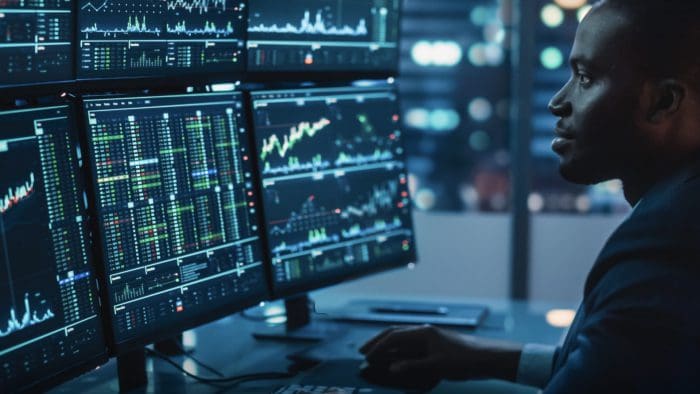
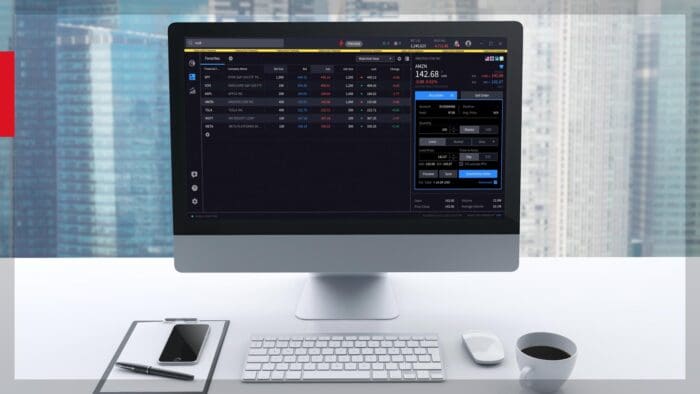


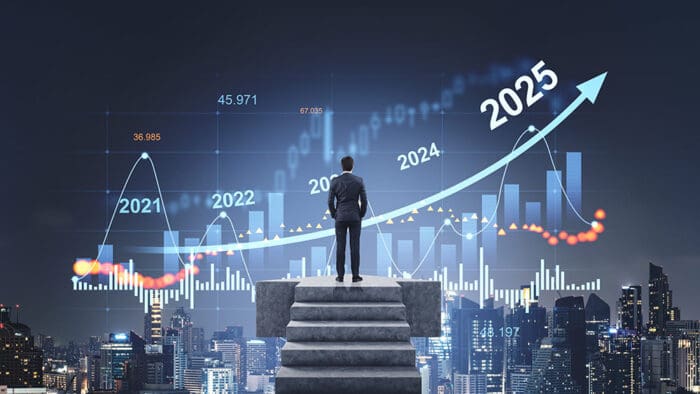

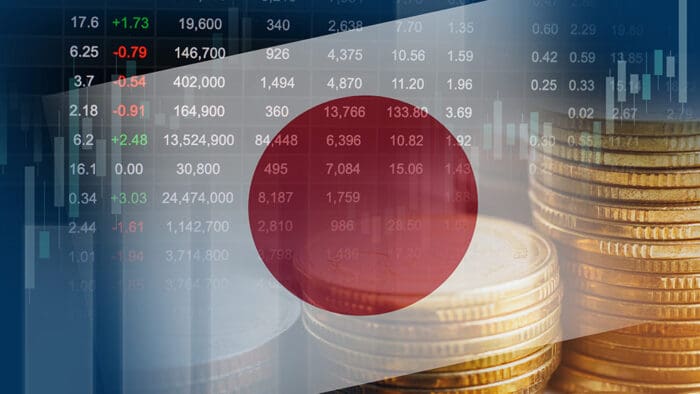
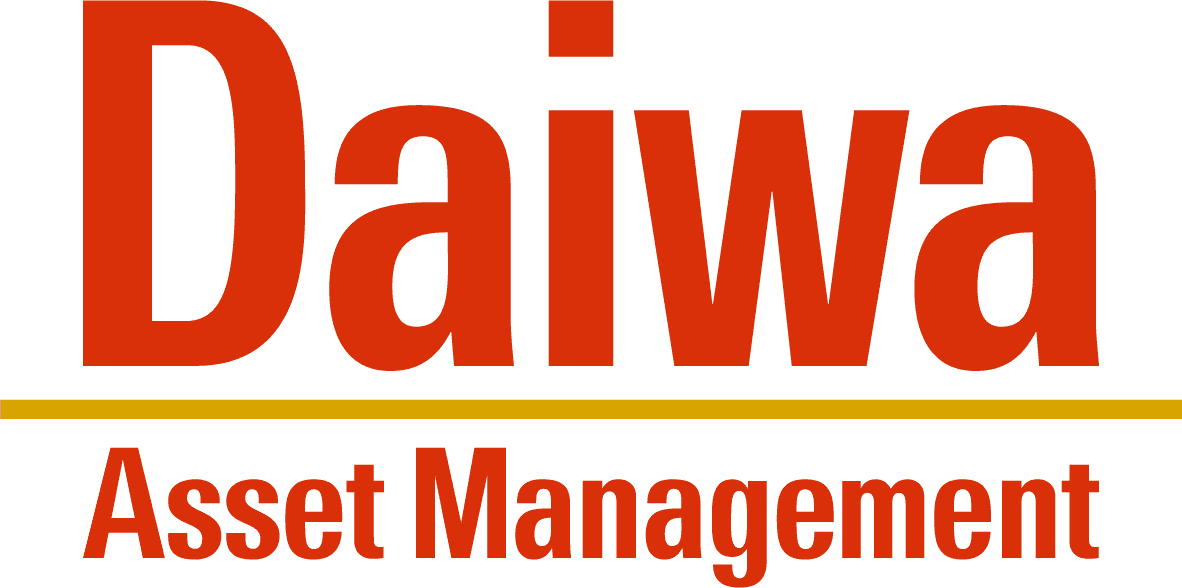
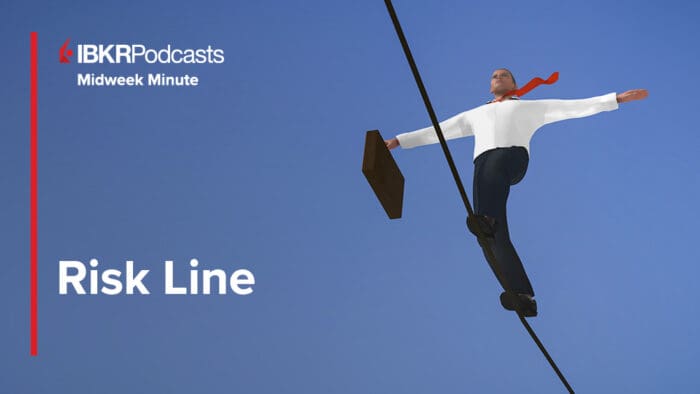
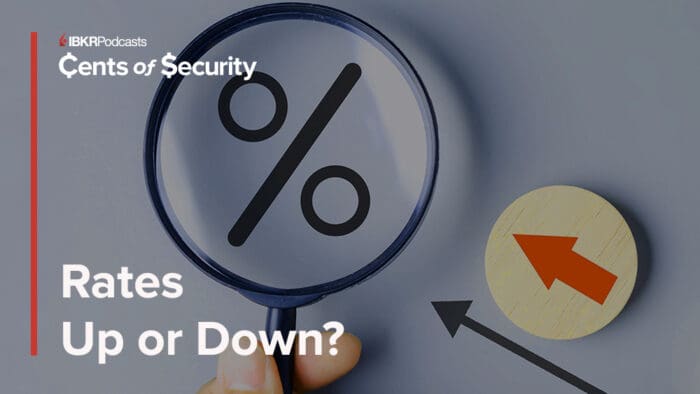

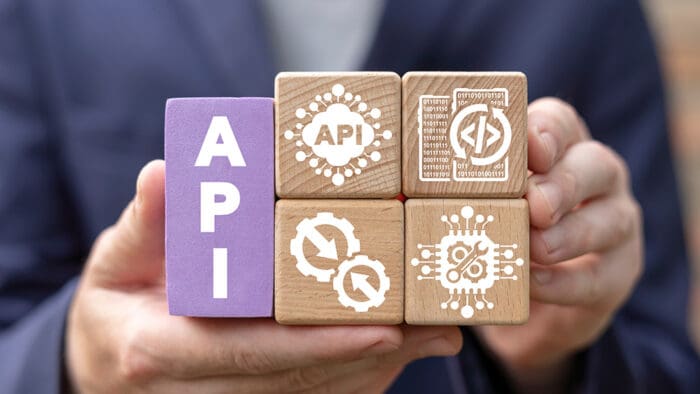






Thanks so much for including Steve Sears. It doesn’t get any better than the two Steves !